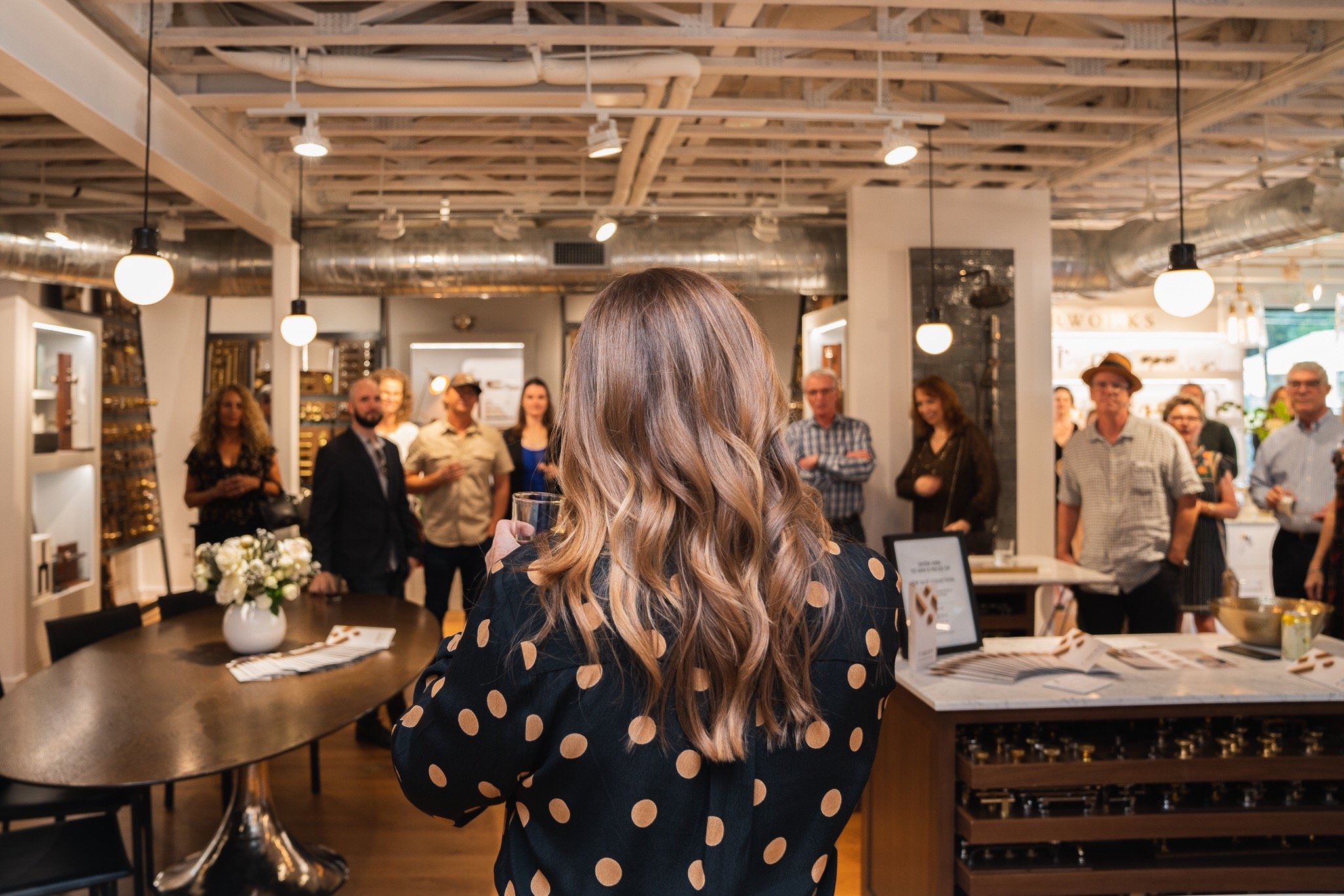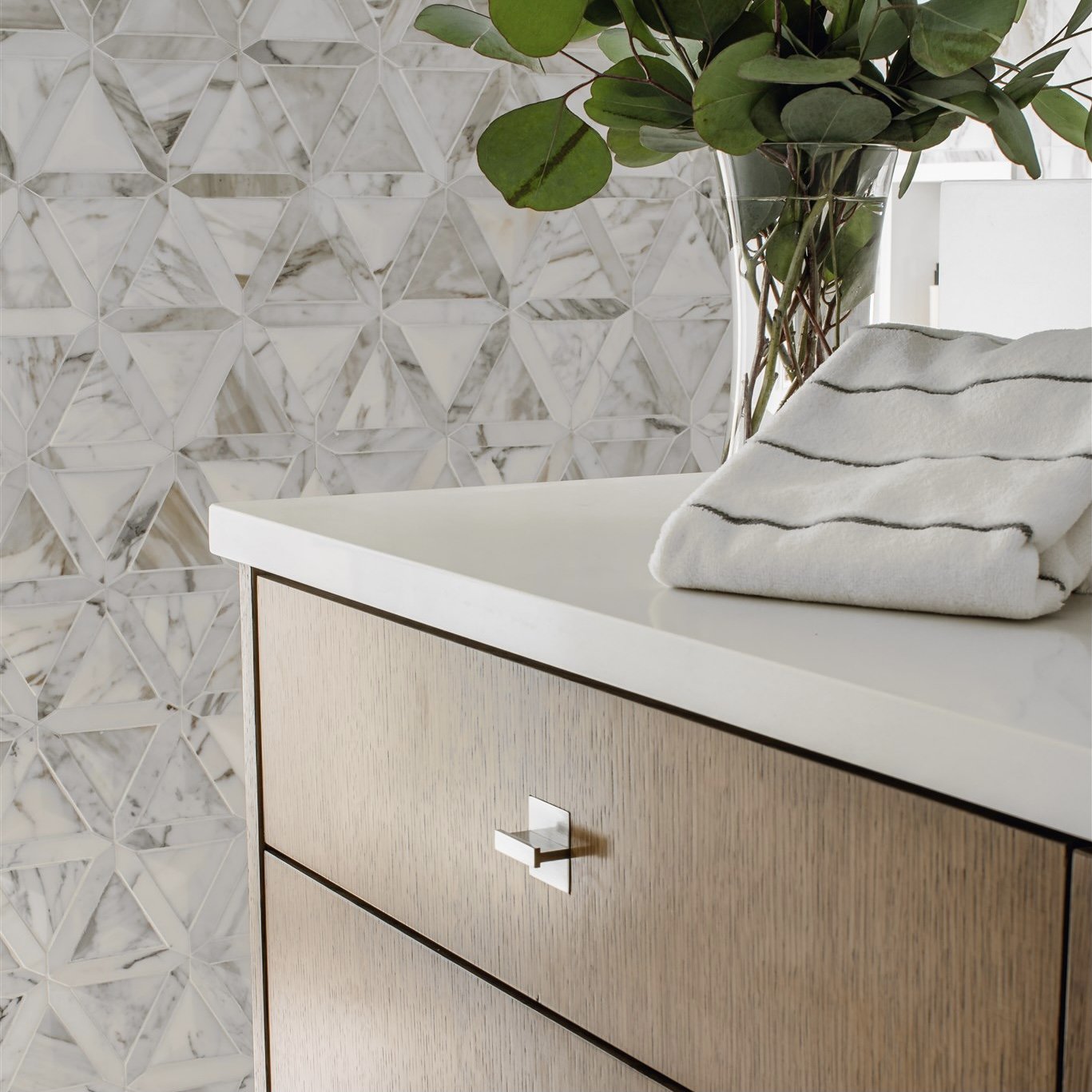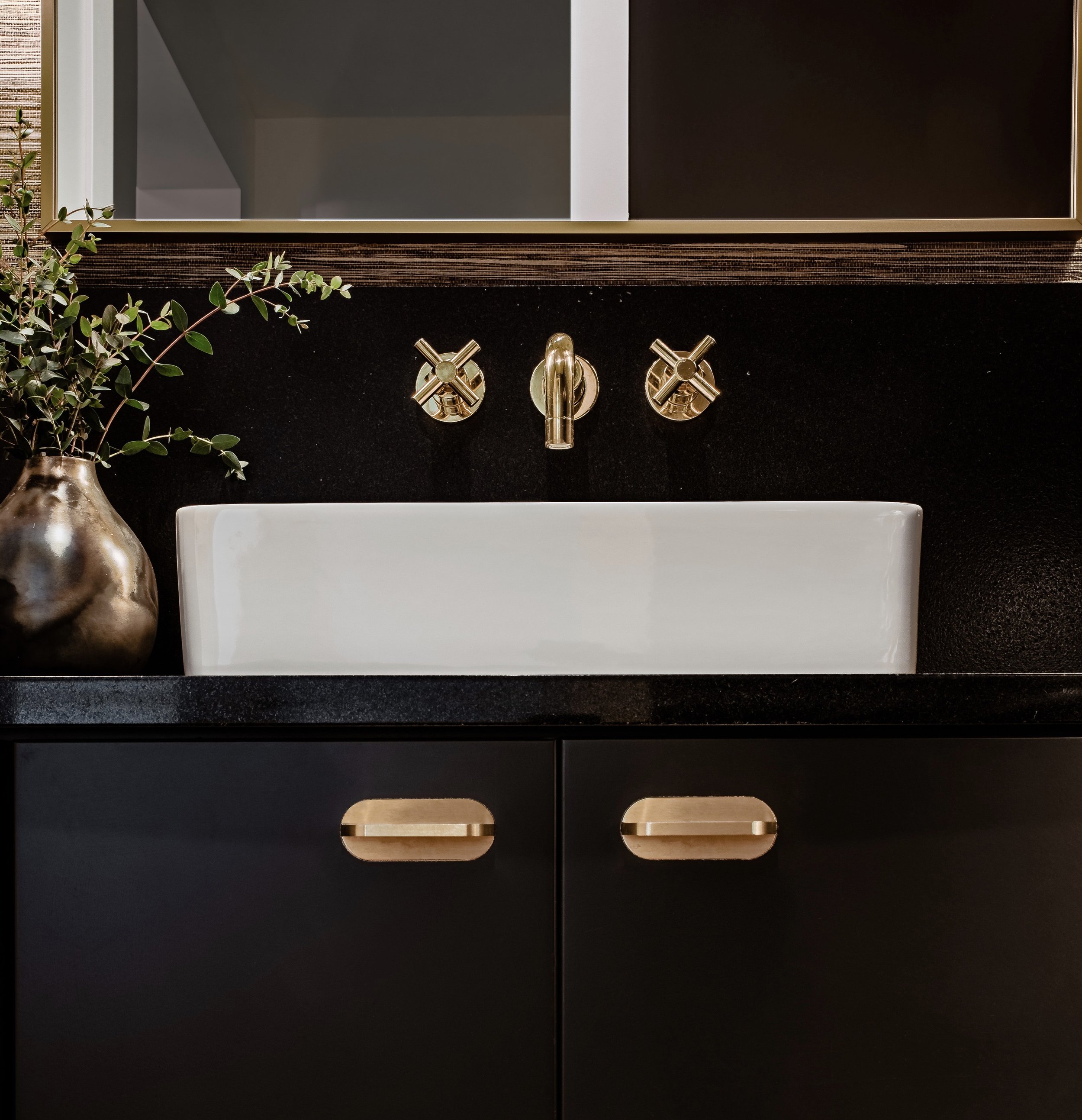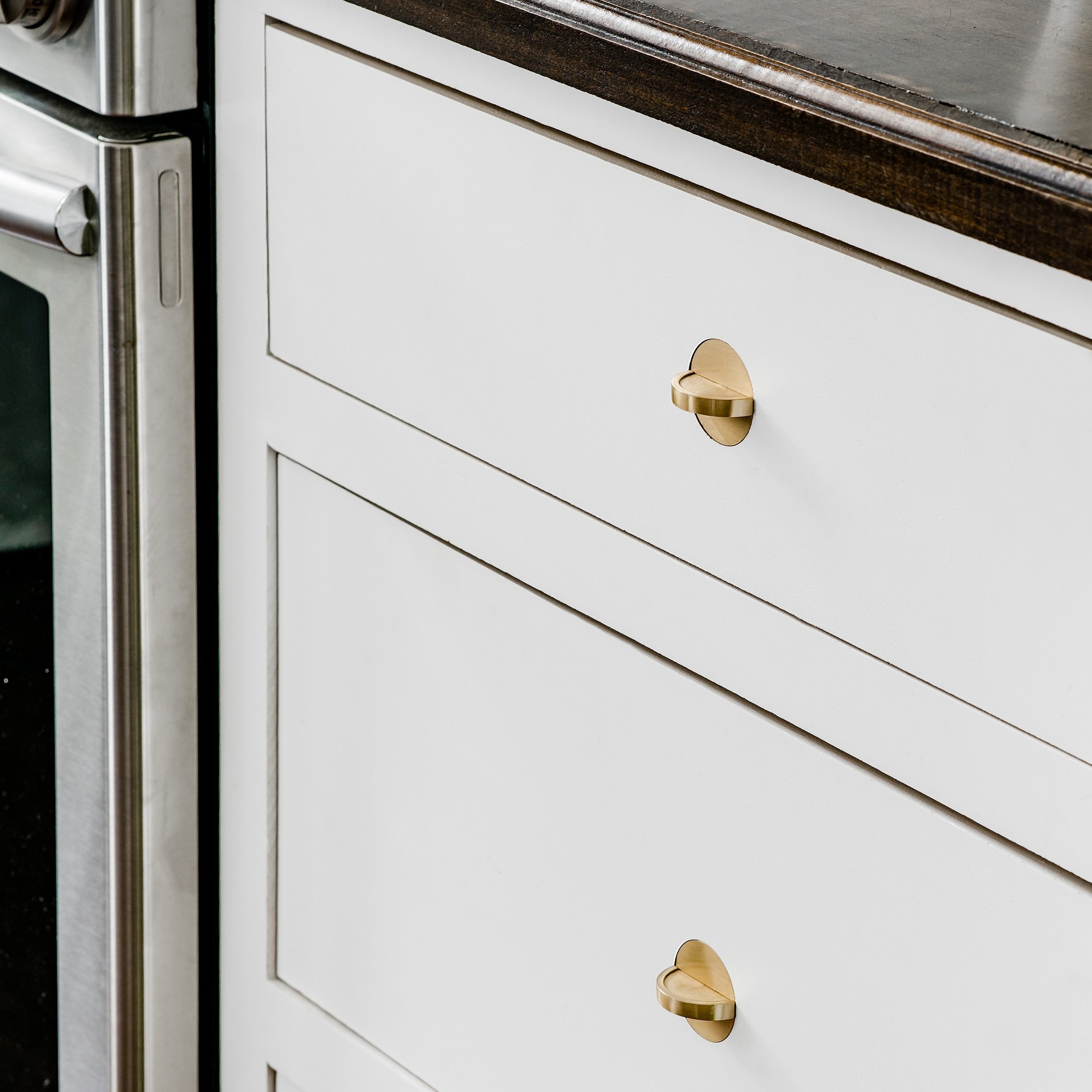Our Finery Launch Party, at Austin’s luxury Alexander Marchant showroom, was a special milestone.
QUIRKS & OBSESSIONS
As someone who cares about design and its effect on our lives, I admittedly have some quirky obsessions and pet peeves surrounding style and functionality. At a high level I love simplicity and elegance (in particular, designs that are anchored in raw function, but with a subtle twist), and I react with deep emotion to things that seem functionally stupid or fake. My husband can attest to the number of pictures he receives via text from my walks, with captions like “See? Isn’t that WEIRD!?”.
AHA MOMENT
This brings me to how Finery, my hardware line, was born. There are specific dynamics around cabinet hardware that have long annoyed me. A few in particular are: 1) knobs that catch on cords from a blow-dryer or curling iron, 2) open ended pulls that hook clothing or scratch your thigh as you pass by, 3) geometric shapes that become cock-eyed as they loosen (square or diamond shaped knobs, etc.). I discuss these types of considerations with clients as we make selections, and one day I learned that a client had similar pet-peeves. When our search for the perfect cabinet pulls for her fell short, I decided to design some. Hence, Finery was born.
THE JOURNEY
Since then, the discovery process has been fascinating. After finding a local machinist who was willing to venture on the path with me (thank you Tim Jurgenson! I am forever grateful!), I learned about working with various metals; which ones are hard to work with, why brass is a good fit, the best way to achieve certain finishes, etc. I also learned about the legalities of patenting and the challenges of supply chain logistics. I initially created my own website and logo, and they have recently been upgraded by the work of a professional branding company (thank you Points North!). What an eye-opening experience! I spoke with various manufacturers and received samples from several factories, including a few overseas. For the first time I inspected quality nuances from high-end U.S. factories versus economical overseas solutions. It was fun to have family members hold the pieces of hardware from each factory to see if they could identify the differences before I explained them. Through the process I decided that certain things are important to me; Finery is committed to the highest level of quality, and to manufacturing in the United States.
MOVING FORWARD
I am loving this adventure and learning something new every day. I also love designing things (you should see my notebook of ideas! I can’t get them to market fast enough). In addition to hardware, I have a mirror design and shelving system that will be in production this year, and many clients are benefitting from our desire for custom exploration. Thank you for your support and interest. I look forward to bringing many fabulous new things to the world in days to come!






